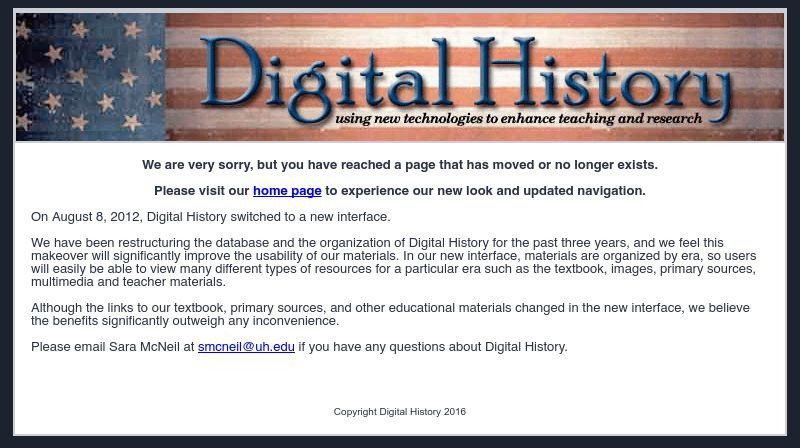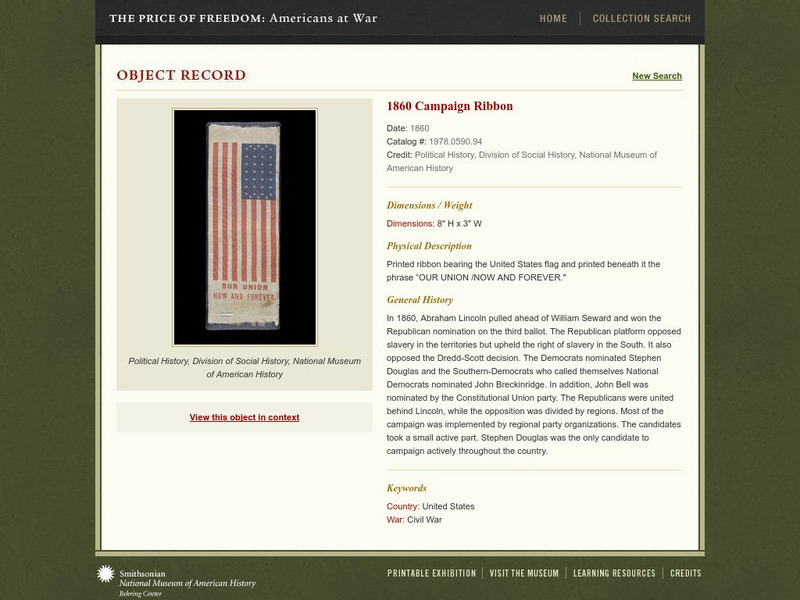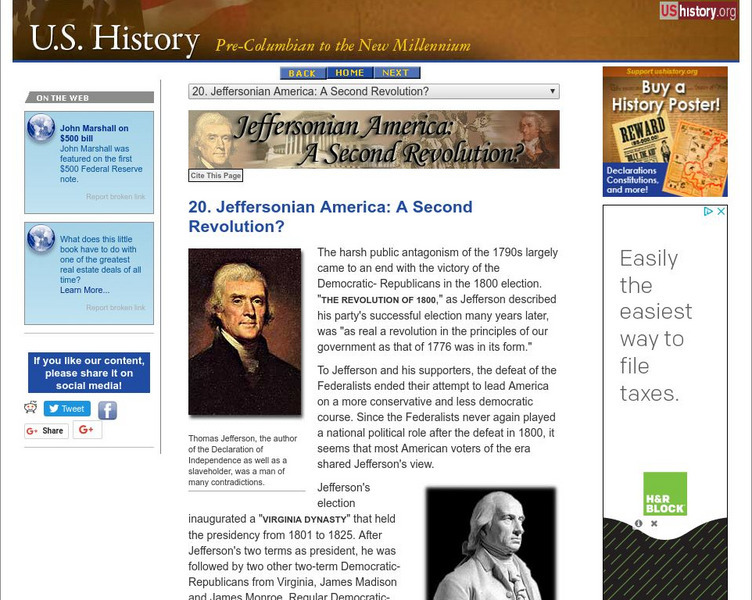Curated OER
The Kansas and Nebraska Act
High schoolers use a primary source of a political cartoon to set the context for a lesson. They answer key questions in writing or orally. Students conduct a class discussion about the issue to stimulate higher order thinking skills...
Curated OER
Debates Over Suspension of the Writ of Habeas Corpus
Eighth graders study the concept of Habeas Corpus. For this Civil War lesson, 8th graders research the reasons for and against suspending the writ of habeas corpus. Students analyze various documents.
Curated OER
History of the Americas: Causes of the Civil War
In this American Civil War activity, students read assigned textbook pages about the causes of the war and then respond to 35 short answer questions about how the war began.
Curated OER
History of the Americas: Causes of the Civil War
In this American Civil War worksheet, students respond to 36 short answer questions that require them to define people and events that were significant during the war.
Curated OER
Politics during the Civil War
Students investigate the politics of the Civil War. They use a graphic organizer in order to help sort the information. The use of key questions help to create starting points for class discussion or student essay responses.
Other
Republican Party: Our History
Read the first few paragraphs of this article to find out about the formation of the Republican Party in 1854 and how it affected the political scene in the last part of the 1850s.
Digital History
Digital History: Emergence of a New Party System
There were many reasons for splits in the first Republican party, now usually referred to as the Democratic-Republican Party. See how that changed the party itself and the ways those changes affected the election of 1824.
US Department of State
Bureau of International Information Programs: History Outline: Sectionalism
Article reviews several conditions of American society that sowed the seeds of civil war, particularly slavery and sectional conflict.
Digital History
Digital History: The Revival of the Slavery Issue
A brief account of how the Kansas-Nebraska Act split apart party coalitions and helped create the new Republican Party. See who joined this party and read about its goals.
University of Groningen
American History: Essays: The American Whig Party (1834 1856)
This article presents the second part of the history of the Whig Party to find out why the issue of slavery brought about its demise.
Digital History
Digital History: The Civil War Begins [Pdf]
The election of 1860 showed the deep divisions that split the country. With four candidates representing four very different approaches to the issue of slavery, the outcome resulted in the secession of South Carolina, followed eventually...
Digital History
Digital History: Civil War in Kansas [Pdf]
The Compromise of 1850 did not solve all the slavery issues in the territories, which was not surprising. Read about the Kansas-Nebraska Act, put forth by Sen. Stephan Douglas, who proposed that the issue be decided by popular...
Digital History
Digital History: Antislavery Timeline
A timeline of actions tied to the prohibition of or ending of slavery from the meeting of the Continental Congress in 1774 to John Brown's raid on Harper's Ferry in 1859.
Independence Hall Association
U.s. History: The Kansas Nebraska Act
Read about the essential repeal of the Missouri Compromise, which had established which states could be slave and which would be free for thirty years, with the rancorous passage of the Kansas-Nebraska Act. See who supported it and why,...
Smithsonian Institution
National Museum of American History: Price of Freedom: 1860 Campaign Ribbon
View a photo a 1860 Campaign Ribbon and read a brief description of the contentious election of 1860. Displayed in the National Museum of American History.
Independence Hall Association
U.s. History: Jeffersonian America: A Second Revolution?
Read about the peaceful "revolution" that occurred in the election of 1800 when the party in power, the Federalists, was defeated in a democratic election by the Democratic-Republicans. See how this showed that the ideals of the new...
History Tools
History Tools: Abraham Lincoln on Equality and Free Labor (1854) [Pdf]
Excerpt from an 1854 speech in which Lincoln praised the ideal of equality and the principle of "free labor". Spelling has been modernized and paragraph numbers added.
ClassFlow
Class Flow: Political Divisions
[Free Registration/Login Required] This flipchart details the growing political divisions in the United States in the decade before the Civil War. It includes information on the election of 1856, the Dred Scott Decision, the Lincoln...
Curated OER
Educational Technology Clearinghouse: Maps Etc: Presidential Election, 1856
A map of the United States during the heated presidential election of 1856, showing the States carried by the Republican Party (John Fremont), Democrat Party (James Buchanan), and the newly formed American Party, or 'Know-Nothing’ Party...
Curated OER
Educational Technology Clearinghouse: Maps Etc: Presidential Election , 1856
A map of the United States during the heated presidential election of 1856, showing the States carried by the Republican Party (John Fremont), Democrat Party (James Buchanan), and the newly formed American Party, or 'Know-Nothing’ Party...
Curated OER
Educational Technology Clearinghouse: Clip Art Etc: John Charles Fremont
(1813-1890) An American military officer, explorer, the first candidate of the Republican Party for the office of President of the United States, and the first Presidential candidate of a major party to run on a platform in opposition to...
Curated OER
Educational Technology Clearinghouse: Clip Art Etc: John Charles Fremont
John Charles Fremont (January 21, 1813 - July 13, 1890), was an American military officer, explorer, the first candidate of the Republican Party for the office of President of the United States, and the first presidential candidate of a...
University of Virginia
Miller Center at Uva: u.s. Presidents: Martin Van Buren
Get the facts about the life and administraton of Martin Van Buren (1782-1862), the 8th President of the United States (1837-1841).















